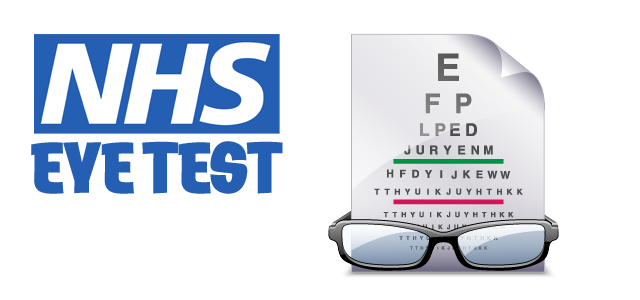![]()
Jack Brown Eyecare, Edinburgh Opticians.
Email: info@jbeyecare.com
Jack Brown Eyecare Branches
30 Elder Street, Edinburgh EH1 3DX
Tel: 0131 557 3531
Open in Google Maps
Westside Plaza, Edinburgh EH14 2SW
Tel: 0131 442 2333
Open in Google Maps

The human eye is shaped like a ball, measuring approximately one inch across, and functions like a living camera. The front portion of the eye, consisting of the cornea (the clear cover of the eye), the lens and the iris (the coloured portion of the eye), acts to focus light on the back of the eye, much like the lens and aperture system of a camera focuses light on a piece of film. The retina, similar to the photographic film itself, is a thin layer of tissue that lies against the back surface of the eye wall. The image obtained by the retina is transmitted via the optic nerve to the brain and forms the picture that we see.
Unlike a camera, the image obtained by the retina is not of uniform clarity or sharpness. Only the central portion of the retina, the macula, is sensitive enough to provide high quality vision for tasks such as reading, watching television, or driving. The macula is a very small area, with the central portion being only about the size of the head of a pin. It is only this specialised area of the retina, the macula, that is capable of the detailed vision necessary for many daily tasks.
Clinical photo of a macular hole
Symptoms of a macular hole are common to most conditions affecting the central part of the retina. They include: decreased central vision for both distance and reading activities, distortion in central vision, a small defect in the central vision where small letters may disappear. The diagnosis of a macular hole is made when an ophthalmologist performs a dilated retinal examination and examines the back of the eye. A fluorescein angiogram (injection of a dye into the vein with photographs taken of the back of the eye) may be recommended to evaluate the situation and ensure that the macular hole is due to the vitreous traction as described above, and not secondary to other rare conditions in the back of the eye.
Until recently, very little could be done to correct the visual deficit resulting from macular holes. As a result of the introduction of microsurgical techniques, it is now possible to offer a surgical procedure with the potential for some visual improvement. This procedure is known as a vitrectomy, and involves the microscopic removal of the vitreous gel within the centre of the eye. Particular attention is paid to removing any of the vitreous attachments from the macula, thus releasing the traction or pulling on the retina which caused the macular hole initially. This permits settling of the retina against the wall of the eye.
In order to completely close the macular hole, however, additional pressure must be exerted on this portion of the retina to allow for complete healing to take place. To assist in this process, a large air bubble is placed within the eye, which, when it comes into contact with the retina, presses it against the wall of the eye, sealing the macular hole. This process acts much like a hand holding wall paper against the wall permitting it to stick and remain in position as the "wallpaper glue" dries.
In order to have its maximal effect, the air bubble must apply continued upward pressure against the retinal surface in the area of the macula. Because the macula is located in the back part of the eye, a patient's head must remain in a "face-down" orientation to allow the air bubble to rise toward the back of the eye and exert this pressure. Patients must maintain this face-down position for approximately 2-3 weeks after surgery in order to achieve successful closure of the macular hole and maximise the chances for vision improvement. This face-down positioning is the single most critical portion of the procedure for closing macular holes. As a result, emphasis must be placed on the patient's ability to co-operate with strict face-down positioning at all times for a period of approximately three weeks after surgery in order to achieve successful outcome.
In order to maintain its round structure, the central portion of the eye is filled with a jelly-like substance known as the vitreous. At birth and through early years, the vitreous has a fairly solid structure, having a consistency somewhat between Gel-O and molasses. As a person ages, however, the vitreous gel begins to shrink and becomes more condensed toward the front part of the eye, being replaced by liquid as the process continues. As the vitreous shrinks, it pulls away from the surface of the retina. In most cases, this pulling away or vitreous separation occurs without any negative effect. A patient may notice floaters but no significant visual damage occurs. In some individuals, however, there may be an area where the vitreous is firmly attached to the surface of the retina. As the shrinkage and forward movement of the vitreous progresses, traction or pulling can be exerted on the retina, and eventually a small hole may form. If the hole occurs in the outer or peripheral portion of the retina, a retinal tear or detachment may result. If, on the other hand, the vitreous is firmly attached to the central portion of the retina (the macula) then shrinkage and movement of the vitreous can result in the formation of a hole in this region, known as a macular hole. The fluid which has replaced the vitreous gel in many areas may then seep through the hole, causing a localised separation of the retina centrally. This process results in a defect or dark spot in the central vision with distortion and central vision loss resulting.
In order to increase the patient's ability to comply with these instructions, numerous devices have been developed that assist the patient in maintaining this face-down position throughout the day and at night as well. Devices can be purchased or rented from a variety of companies that permit more comfortable positioning during sleep as well as allowing the patient to maintain a face-down position while eating and reading.
At the end of the 2-3 week period of strict face-down positioning, the patient is then permitted to resume a more normal upright posture. The air bubble itself, however, may take anywhere from 6-8 weeks following surgery to completely disappear. The air bubble is gradually resorbed by the body, and the vitreous cavity is then filled with liquid produced by cells in the front of the eye.
The surgical procedure itself is performed typically under local anaesthesia, and a patient may remain in the hospital overnight, or may be scheduled for ambulatory surgery, able to return home by the end of the day of the surgical procedure itself. A postoperative examination within 24 hours of surgery is required in all cases. Regular follow-up examinations are performed during the first three weeks of recovery, to monitor for successful closure of the hole, observe for any potential complications, and to reinforce the importance of face-down positioning. Patients typically utilise several eye drops applied to the operated eye over the course of several weeks following the surgical procedure.
Approximately 6-8 weeks after surgery, when the bubble has completely resorbed, the patient is measured for glasses. Full visual recovery may not occur until as late as three months after the surgical procedure.
As with all surgical procedures, there are potential complications or side-effects associated with the repair of the macula hole. These include a small percentage of patients who develop retinal tears or detachments during the surgical procedure itself, or in the immediate postoperative period. These problems are usually easily repairable.
In patients who have not already undergone cataract surgery, the development of a cataract occurs in almost all individuals within six months to two years. Surgical removal of the cataract and placement of an intraocular lens is then required.
Frequently Asked Questions
Is a macular hole the same as macular degeneration?
No, macular holes and macular degeneration are two separate and distinct conditions. As described elsewhere on this Website, macular degeneration is a condition affecting the tissues lying under the retina, while a macular hole involves damage from within the eye, at the junction between the vitreous and the retina itself. There is no relationship between the two diseases.
Is this is an inherited condition?
There is no known inheritance pattern for macular holes, and there is no evidence that macular holes are carried from one generation to another.
If I have a macular hole in one eye, does it happen in the other?
Depending upon the degree of attachment or traction between the vitreous and the retina, there may be risk of developing a macular hole in the other eye. The ophthalmologist evaluating you can determine the status of the vitreous gel and its degree of traction on the retinal surface in the uninvolved eye, and can help to better define the risks to this eye. In those cases where the vitreous has already become separated from the retinal surface, there is very little chance of developing a macular hole. On the other hand, when the vitreous remains adherent and pulling on the macular region in both eyes, then there may be a more significant risk of developing a hole in the second eye.
Is there anything that caused the macular hole, or is there anything that can be done to prevent a macular hole from developing in the other eye?
In very rare instances, trauma or other conditions lead to the development of a macular hole. In the vast majority of cases, however, macular holes develop spontaneously. As a result, there is no known way to prevent their development through any nutritional or chemical means, nor is there any way to know who is at risk for developing a hole prior to its appearance in one or both eyes.
Does it matter how long I have had the macular hole if I am interested in having surgery done?
There is evidence in the scientific literature that macular holes present for less than six months have a better chance of repair and visual recovery than those present for more than six months. Studies have shown, however, that some vision improvement can take place in patients with more long-standing macular holes, but rapid evaluation and treatment is preferable in patients with this condition. If a macular hole exists in one eye, it is therefore very important to monitor for any vision changes in the second eye, and report these vision changes to your ophthalmologist immediately.
If I have surgery, what type of vision improvement can be expected?
Typically, for macular holes less than six months in duration, a vision improvement of approximately three lines on the eye chart (or 50% improvement) can be achieved. Obviously, this is an "average" visual improvement. Vision recovery varies on a patient-by-patient basis, and each patient must be evaluated on an individual basis and discuss with their physician the expectations for visual recovery. Some patients achieve only a small amount of vision recovery, while others achieve a more significant improvement.
How important is it really to maintain the face-down position?
Face-down positioning is crucial to the success of the operation. If a patient is not able to maintain face-down positioning, it is unlikely that the operation will succeed. Therefore, before macular hole surgery is considered, a patient should experiment at home with maintaining a face-down position for a period of time to ensure that they are able to comply with the restricted activities necessary in the postoperative period. Some patients, because of medical conditions or physical limitations, may be unable to comply with the positioning and would not likely be good candidates for this procedure.
When will I get my vision back?
During the postoperative period, the air bubble in the eye will be pressing on the macula to ensure closure of the hole. While the air bubble is present in the eye, the eye is unable to focus light properly, and therefore vision is significantly disrupted. Often patients are only able to see shapes, shadows or hand movements in front of their eyes while the bubble is large. As the bubble begins to shrink, usually between the third and fourth week, vision begins to return. Final vision recovery is often not achieved for 6-12 weeks following the operation after the bubble completely resolves, the macular hole heals, and a final prescription for glasses is given. For those patients who have not had cataract surgery, the vision may begin to exhibit gradual deterioration approximately 6-12 months after the operation as a cataract develops. Once cataract surgery is performed, vision would then typically return to its maximal level.
Am I able to travel after macular hole surgery?
Patients are not permitted to fly when there is a large air bubble present inside the eye. When a person travels by air, there are changes in air pressure which can result in expansion of the air bubble and increased eye pressure. In order to prevent this complication, patients are restricted from any type of air travel until the bubble is nearly gone, or small enough that the patient's physician considers it safe to fly.
Are there any special chemicals used to close the macular hole?
When surgery is performed to close a macular hole, no laser treatment is applied to the hole itself, as laser can be damaging to the delicate central tissue of the macula. In order to avoid this damage, the air bubble alone is used to help provide the seal between the retina and the wall of the eye. Experiments have been performed in recent years in an attempt to determine if chemicals applied to the surface of the macular hole at the time of surgery will increase the success rate for the operation. Studies have not yet conclusively demonstrated that application of any chemicals are necessary to have a successful result from the surgical procedure.
text size >












